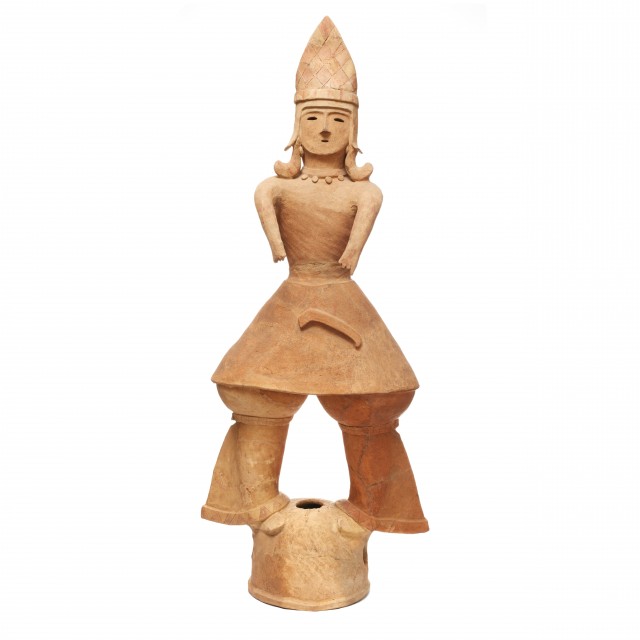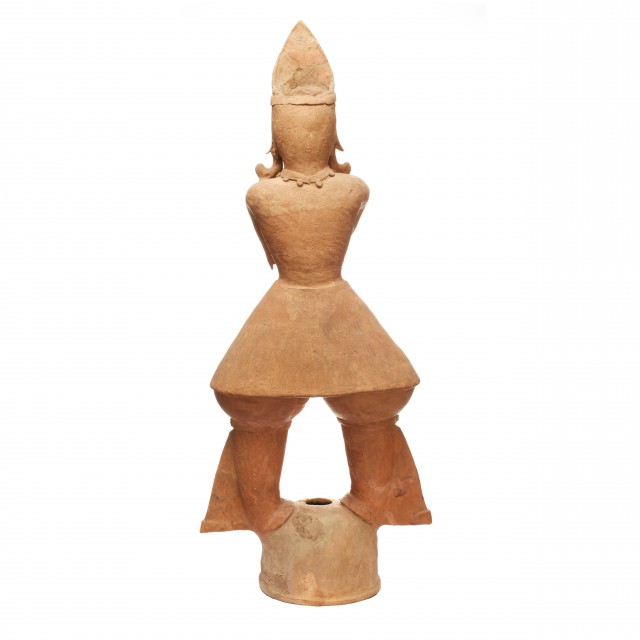
Figure of a Man

Photography by Synthescape, Digital image © Asia Society

Photography by Synthescape, Digital image © Asia Society
Figure of a Man
6th-7th century
Japan, Ibaraki Prefecture
Earthenware with traces of pigment
H. 56 x W. 21 x D. 11 in. (142.2 x 53.34 x 27.94 cm)
Asia Society, New York: Mr. and Mrs. John D. Rockefeller 3rd Collection, 1979.199
Provenance
John D. Rockefeller 3rd, New York, NY; acquired from Asian Gallery Oriental Art & Antiquities (Richard S. Ravenal), New York, NY, 1972.
The Asia Society, New York, NY, bequest of John D. Rockefeller 3rd, New York, NY, 1979.
Licensing inquiries
Wearing a fanciful, pantaloon-and-long-jacket outfit and a tall, triangular headdress with crisscross patterns, this charming male figure is a study of complex forms. At the same time, he is endowed with a simplified face comprising hole openings for eyes and mouth, and retains an overall cylindrical quality. At first nothing more than plain tubes, haniwa (literally "clay circle"), or burial mound figures, eventually morphed into more elaborate forms, including human and animal shapes as well as architectural structures. Haniwa were placed in groups on the exterior -- on top, around the edges, and at the entrance -- of mound tombs of the elite during the Kofun period. These tombs ranged from elaborate, keyhole shapes to rounded mounds of earth and, along with the multitude of haniwa around them, represented powerful visual markers of the deceased's social and political status. Although not specifically Shinto or Buddhist, haniwa may have held some spiritual meaning for the elite whose tombs they guarded.



